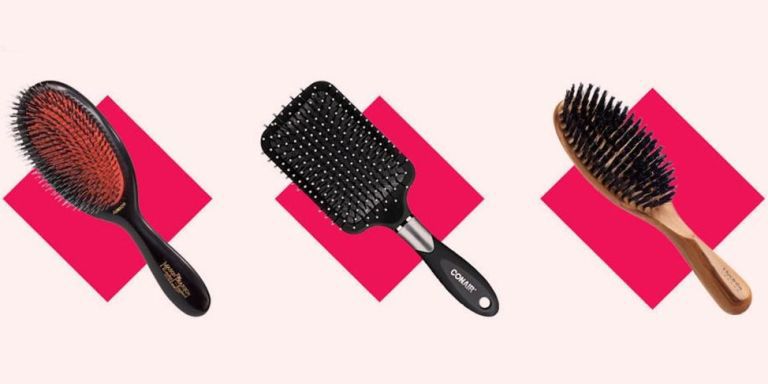Everyone knows you have to clean your makeup brushes, but for some reason hairbrushes are often forgotten. “Like all your beauty tools, hairbrushes get dirty with repeated use, especially if you’re using styling products on your hair,” says dermatologic surgeon and RealSelf contributor Sejal Shah, M.D.
Along with hair clumps and product residue, dust mites, dead skin cells, and oils can accumulate. “The buildup on your hairbrush can serve as nidus for bacteria and yeast overgrowth, so there is an infection risk,” warns Dr. Shah. Skipping regular cleanses also prevents your brush from working properly, since with each stroke of a dirty brush, you’re redepositing buildup back onto your strands and scalp, making your hair look greasier.
The first step to cleaning your brush: find out what kinds are in your collection. Then remove built-up hair once a week and follow these instructions for an occasional wash.

Plastic or ceramic brushes
These brushes and combs can all withstand a monthly bath since they can dry completely. “Fill up the sink or bowl with warm water, add a small amount of clarifying or gentle shampoo and thoroughly wash your brushes,” Dr. Shah advises. Be sure to rinse them well, then let them air dry.

Paddle brushes
Tools with squishy bases are a bit trickier, warns Birnur Aral, Ph.D., Director of the Beauty Lab at the Good Housekeeping Institute. “Paddle brushes might trap water underneath, which may be hard to get out,” she says. The lingering moisture can result in unpleasant smells or worse, mold. Aral recommends consulting the manufacturer’s care instructions, or washing these brushes every other month.

Wooden brushes
Take caution with wooden handles too. “The finish on the wood may get ruined with soap and water,” says Aral. Again, check the care instructions and refrain from intense scrubbing. “I wouldn’t soak any brushes with wooden handles,” advises Carolyn Forte, director of the Good Housekeeping Institute Cleaning Lab. “I’d recommend a quick swish.”












